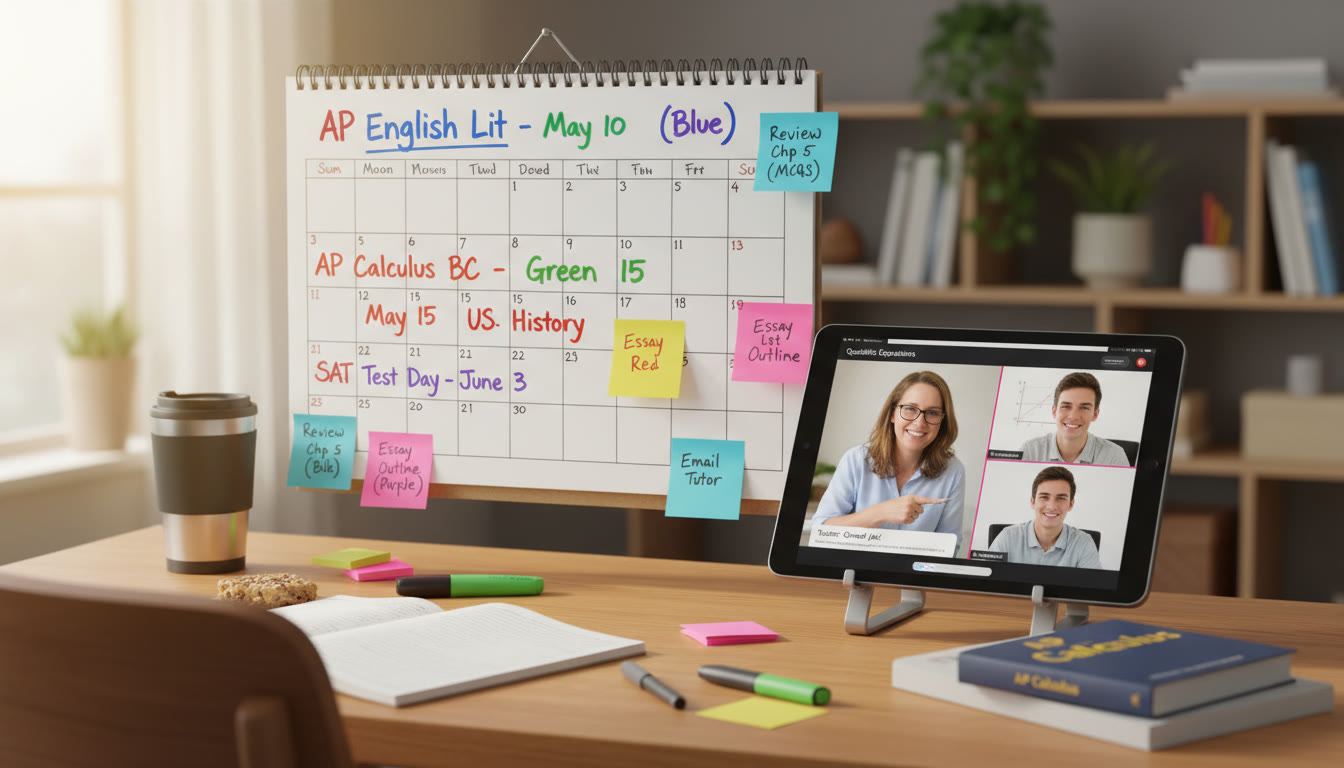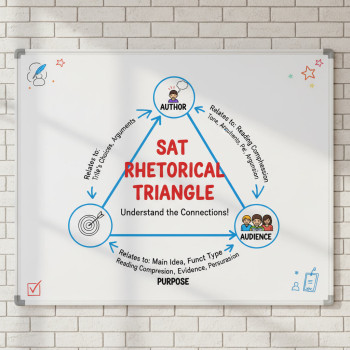AP vs SAT: A One-Page Parent Flowchart (Narrative Guide)
Parents and students: imagine a single sheet of paper that gently answers the big question many families face in high school “Should we prioritize AP courses and exams, or the Digital SAT?” This blog is that sheet, translated into a warm, practical narrative. It s a decision tree you can read top to bottom, with context, examples, and a few real-world nudges to help you choose the path that fits your child.

Why this decision matters and why it s not one-size-fits-all
AP (Advanced Placement) courses and the Digital SAT both matter for college preparation, but they serve different purposes. AP classes are subject-focused, college-level coursework and exams that can show mastery and sometimes earn college credit. The Digital SAT is a standardized admissions test that evaluates reading, writing, and math skills under timed conditions.
Your family s priorities course rigor, GPA management, scholarship opportunities, college credit goals, testing comfort, and time availability determine which path to emphasize. This guide walks you through those priorities like a flowchart, but in words you can act on immediately.
Start here: What matters most to your family?
Decision Point 1 Are you prioritizing college credit or demonstrating subject mastery?
If yes, lean toward AP. AP exams (like AP Calculus, AP Biology, AP English) let students dive deep into a subject. Strong AP scores may translate to college credit or placement out of introductory courses saving tuition and time. If demonstrating subject mastery to selective colleges is a priority, APs show that a student embraced academic challenge in high school.
If no for example you re focused on broader testing metrics like a single admissions score you might prioritize the Digital SAT, which provides a universal score colleges use to compare applicants from different schools.
Decision Point 2 How does your high school report GPA and course weight?
- If your school weights AP grades heavily (for example, a 5.0 scale for APs), taking APs can boost weighted GPA and class rank. For students aiming to climb class rank or compete for internal honors, APs may be more valuable.
- If your school does not weight grades or you re balancing extracurriculars and mental health, the SAT might offer a cleaner, lower-stress path to highlight academic readiness without adding more in-school workload.
Flowchart branch: When APs are likely the better bet
You want college credit or advanced placement
Example: Sofia loves chemistry, plans to major in a STEM field, and hopes to skip introductory college labs. A strong AP Chem score could place her into higher-level classes in freshman year potentially saving her both time and money.
You re applying to selective colleges that value demonstrated rigor
Selective schools look for students who push themselves in high school. APs, IB, or honors courses signal intellectual curiosity and willingness to take on college-level work. If Jason s school offers AP Literature and he thrives in reading and writing, choosing AP Lit can showcase strengths in a relevant academic area.
You want to strengthen subject-specific transcripts
AP courses give concrete evidence of subject strength. For subject-specific scholarships, department recommendations, or major admission, AP scores and grades can be persuasive.
When to couple APs with digital SAT prep
Even when APs are emphasized, a solid Digital SAT score helps. Many colleges still view a high SAT score as consistent evidence of readiness across disciplines. Sparkl s personalized tutoring can weave AP content review with Digital SAT strategies, helping students reinforce domain knowledge while practicing test-specific skills like pacing and question interpretation.
Flowchart branch: When the Digital SAT might be the smarter focus
You need a strong, comparable metric for college admissions
Some families prefer to concentrate on the Digital SAT because it provides a standardized score that admissions offices use to compare applicants from widely different backgrounds. If your child is applying from a school with few AP offerings or inconsistent grading, a strong SAT score levels the playing field.
You have limited bandwidth and want to optimize study time
AP classes are semester- or year-long commitments. If your student is juggling demanding extracurriculars, part-time work, or personal challenges, preparing for the Digital SAT might be a more time-efficient way to show academic readiness.
You re aiming for merit scholarships tied to test scores
Some scholarships use SAT scores for eligibility or ranking. If scholarship funding is a primary driver, prioritizing SAT prep can have immediate financial upside when results open doors to awards.
Practical considerations that change the flow
Time of year and timeline
- Junior year: prime time for both APs and SATs. Many students take AP courses during junior year while sitting for the Digital SAT in spring or fall.
- Senior year: AP exams are typically in May; the Digital SAT runs on scheduled national dates. If you must choose, decide which deadlines (college applications, scholarship cutoffs, AP exam dates) matter most.
Student temperament and testing style
Some students excel in classroom settings and extended projects; AP courses play to their strengths. Others perform better in short, high-focus testing windows those students may prefer to invest in SAT preparation.
School offerings and access
Not all schools offer the same AP courses. If your student s interest area isn t available as an AP, prioritize what s accessible and supplement with independent study or external exams if appropriate. Alternatively, a standout Digital SAT score can compensate for fewer in-school advanced options.
How to visualize this on a one-page flowchart (textual version)
Top of the page: “What is your primary goal?” Answer choices branch to either “College Credit/Subject Mastery” or “Standardized Comparative Metric”. Each branch then narrows via questions we ve covered: school weighting, bandwidth, intended major, scholarship needs, and student testing preference. The end nodes offer action items: take APs, prioritize SAT, or pursue both with a staggered plan.
One-page action items (what the flowchart should recommend)
- AP-focused path: Enroll in 1 3 APs aligned with strengths; schedule practice exams and AP-style prompt work; plan college lists that value AP rigor.
- SAT-focused path: Create an SAT study calendar with full-length digital practice tests; emphasize timed sections and strategies for the adaptive format; target scholarships requiring scores.
- Hybrid path: Take a manageable number of APs (1 2) and concurrently prep for the Digital SAT with targeted practice sessions; use summer for deeper AP review or SAT bootcamps.
Study-plan comparison table
| Focus | Time Commitment | Primary Benefit | Typical Result |
|---|---|---|---|
| AP Courses & Exams | High (semester/year-long) | College credit, subject mastery, transcript rigor | Stronger subject profile; potential college credit |
| Digital SAT Prep | Moderate (weeks to months before test) | Comparable metric for admissions and scholarships | Single score comparable across applicants |
| Hybrid (AP + SAT) | Very high (needs time management) | Both subject depth and strong admissions metric | Well-rounded application; higher workload |
Example parent-student scenarios and recommended routes
Scenario A: The STEM-Interested Student (Maya)
Maya wants to major in engineering. Her school offers AP Calculus and AP Physics. Her GPA is strong and the school weights APs. Recommendation: prioritize APs for subject depth; take the Digital SAT after junior year with moderate prep. Sparkl s 1-on-1 tutors can create a tailored plan tying AP exam preparation to SAT math strategies so Maya reinforces content while improving test skills.
Scenario B: The Busy Multitalented Student (Liam)
Liam juggles varsity sports and a part-time job. He excels in English but has limited available time. Recommendation: take one AP (AP English) to maintain transcript rigor, and focus major effort on Digital SAT prep in a concentrated period. A focused tutoring program can maximize practice test quality rather than quantity.
Scenario C: The Little-Resourced School Student (Asha)
Asha s high school offers few APs. Her school s grading is inconsistent. Recommendation: prioritize the Digital SAT to provide a strong, comparable metric for colleges; supplement with online AP self-study if she wants subject credentials. Sparkl s tutors can help translate limited in-school offerings into competitive study plans that include AP-style problem practice.
How to combine AP and Digital SAT prep efficiently
Combining both is completely possible and often ideal but it requires planning.
- Map the timeline: place AP exam dates and your target SAT test date on a master calendar.
- Cross-pollinate study topics: AP math/science reviews double as SAT math practice; AP reading and essay practice build critical reading and writing stamina for the SAT’s evidence-based tasks.
- Use smart practice: prioritize full-length digital practice tests for SAT pacing; use AP-style free-response practice for depth.
- Lean on personalized support: 1-on-1 tutoring (for example, Sparkl s tutors) can design a hybrid schedule that prevents overload and targets weak spots.
Practical checklist for parents (one-page summary)
- Define primary goal: credit/rigor or standardized comparison?
- Check school policies: course weighting and AP availability.
- Assess student bandwidth: extracurriculars, jobs, and wellbeing.
- Set a timeline: map AP exam dates and SAT test dates now.
- Decide on path: AP, SAT, or Hybrid with contingency for retests or additional APs.
- Consider tutoring: choose personalized 1-on-1 help if needed for efficiency and morale.

How to evaluate success metrics that matter
Measure beyond raw scores. Consider the following:
- Learning gains has the student mastered material they care about?
- College fit do chosen colleges reward AP credit or weigh standardized tests heavily?
- Wellbeing did the student maintain a healthy balance?
- Financial return will AP credits reduce college costs or will SAT-based scholarships offset tuition?
These metrics guide the next season of planning: more APs, SAT retakes, or a focus on enrichment and rest.
Quick answers to common questions parents ask
Can a student do both APs and the SAT effectively?
Yes many students do both. The key is prioritization, time blocking, and smart overlap between study activities. Personalized tutoring can reduce wasted hours by targeting weaknesses rather than following a generic syllabus.
Do colleges prefer AP scores to SAT scores?
Colleges evaluate both differently. AP scores demonstrate mastery in a subject; SAT scores are a universal comparison tool. Many colleges consider both in context: a strong transcript with APs plus a competitive SAT score is ideal for presenting a complete academic picture.
If time is limited, which should we choose?
If your school weights APs and your child wants college credit or to signal rigor, choose APs. If you need a universal metric for admissions or scholarships and want a shorter, concentrated prep period, focus on the Digital SAT.
Final words a thoughtful, calm decision
This decision isn t about choosing a winner forever. It s about making the right choice for where your student is today, and where they want to go next. Some families start with APs and later sharpen SAT skills. Others test the SAT first and add APs where they can. Both paths build college readiness.
If you want tailored help building a timeline or study plan, consider one-on-one support. Personalized tutoring can craft a plan that respects your student s strengths, schedule, and emotional bandwidth making preparation efficient and humane. Sparkl s personalized tutoring, for example, offers tailored study plans, expert tutors, and AI-driven insights to monitor progress and adapt lessons so that every minute of study moves the needle.
Next steps for parents a simple to-do list
- Step 1: Print or sketch a one-page flowchart using the decision points in this article.
- Step 2: Put AP exam dates and target Digital SAT dates on a shared family calendar.
- Step 3: Book a short consultation with a tutor (if needed) to map a 3 6 month plan.
- Step 4: Revisit the plan at the end of each semester and adjust.
There s no single perfect path. But armed with a one-page flowchart and a calm, deliberate plan, families can make a choice that supports both academic goals and student wellbeing. Take a deep breath you ve got options, and you re not alone in choosing them.
Want help making the flowchart? Outline your student s priorities and timeline, and a short personalized tutoring plan can be drafted to match. Good luck you and your student are already doing the most important thing: thinking this through together.


















No Comments
Leave a comment Cancel